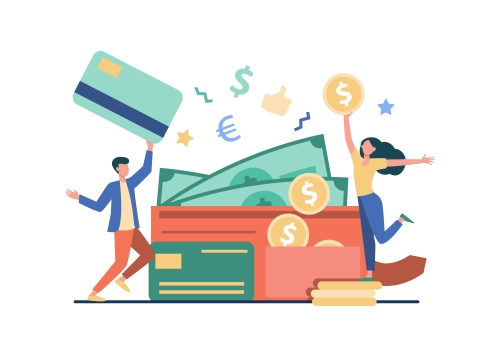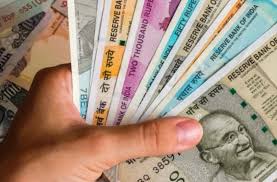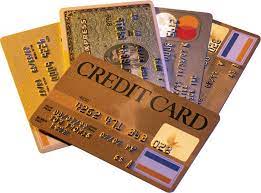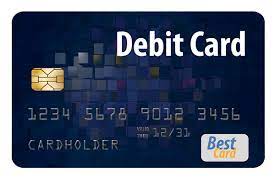Notes of Money and Credit Class 10
Class 10
Notes of Money and Credit Class 10- In this article, we will explore the fascinating world of money and credit . Money and credit play a crucial role in our daily lives, and understanding their dynamics is essential for making informed financial decisions. We will delve into the concepts of money, its functions, and various forms. Additionally, we will examine the credit system, its importance, and the different sources of credit. By the end of this article, you will have a better understanding of how money and credit affect the economy and society as a whole.
Money as a medium of exchange -Notes of Money and Credit Class 10
Money serves as a medium of exchange, enabling individuals to exchange goods and services. It allows a person to easily trade money for any desired commodity or service.
- The government issues modern money, which comprises banknotes and coins used for exchange.
- Financial institutions create electronic forms of money like credit and debit cards, online payment systems, and digital wallets.
- Customers can spend more than they have in their accounts by obtaining credit from financial institutions in the form of loans or overdrafts.
- The government backs modern money to ensure its stability and value. It is called fiat currency, and its value is legal tender declared by the government.
- Money's use has simplified and enhanced trade and commerce as it allows individuals to exchange goods and services without the need for direct bartering or trading.
- However, the reliance on money has also led to issues such as inflation, as governments may print more money, leading to a decrease in its value over time. Additionally, the use of credit and debt has led to issues such as debt cycles and financial crises.
- Despite these challenges, modern forms of money have revolutionized the way we exchange goods and services, and will continue to play a crucial role in the global economy.
Types or forms of money -Notes of Money and Credit Class 10
- Currency: Physical banknotes and coins issued by the government and used as a medium of exchange.

- Demand deposits: Bank deposits that can be withdrawn on demand by the depositor, including checking and savings accounts.
- Credit cards: Cards that allow individuals to borrow money from a financial institution and make purchases on credit.

- Debit cards: Cards that allow individuals to spend money from their own bank account, deducting the amount spent from their account balance.

- Online payment systems: Platforms that enable individuals to make electronic transactions, such as PayPal and Venmo.
- Digital currencies: Virtual currencies that exist only in digital form, such as Bitcoin and Ethereum.
- Electronic checks: Electronic versions of traditional paper checks that can be sent and received electronically.
- Traveler's checks: Prepaid checks that can be used like cash and can be replaced if lost or stolen.
- Money orders: Prepaid certificates used for transferring money between individuals or institutions.
- Gift cards: Prepaid cards that can be used to purchase goods or services from specific retailers.
Loan activities of bank-Notes of Money and Credit Class 10
Banks engage in loan activities to provide financing to individuals and businesses in need of capital. Loans are one of the primary sources of revenue for banks, and the interest charged on loans is a key way in which banks make money.
To engage in loan activities, banks first need to assess the creditworthiness of potential borrowers. This involves evaluating a range of factors such as credit history, income, debt-to-income ratio, and collateral. Based on this assessment, the bank will determine whether to approve the loan, and if so, the amount and interest rate.
Once the loan is approved, the bank will disburse the funds to the borrower, who will be required to make regular payments over a set period of time. These payments will typically include both principal and interest.
Banks offer a variety of loan products, including personal loans, business loans, mortgages, and credit cards. Each of these products has different terms and interest rates, and borrowers can choose the product that best suits their needs.
In addition to providing financing, banks also play a key role in managing risk associated with loans. This includes monitoring borrowers' payment behavior and taking action if a borrower falls behind on payments or defaults on the loan.
Overall, loan activities are a critical component of banking, providing much-needed capital to individuals and businesses while also generating revenue for banks
Terms of credit
The lender specifies an interest rate in every loan agreement, which the borrower must pay along with the repayment of the principal. Additionally, lenders require collateral (security) against loans.
- The borrower possesses collateral, such as land, buildings, vehicles, livestock, and deposits with banks, that acts as security for the lender until the loan is paid back.
- In the event of the borrower's failure to repay the loan, the lender can sell the collateral or asset to receive payment.
- The terms of credit include the interest rate, collateral and documentation requirements, and repayment method. These terms can differ based on the lender and borrower's nature.
Formal Sector of credit in India -Notes of Money and Credit Class 10
Formal sector loans: Banks and cooperatives provide formal sector loans, which are regulated by the Reserve Bank of India. Banks are required to report information on their lending activities to the RBI, including the amount lent, the interest rate charged, and the borrower's identity.
Informal sector loans: Informal sector loans come from moneylenders, traders, employers, relatives, and friends. There is no regulatory body overseeing the credit activities of lenders in the informal sector, leaving them free to resort to unfair means to recover their money.
Formal and Informal credit
| Formal Credit | Informal Credit |
|---|---|
| Regulated by government authorities such as the Reserve Bank of India | Unregulated by any government authority |
| Provided by formal financial institutions such as banks and cooperatives | Provided by individuals or groups such as moneylenders, traders, employers, relatives, and friends |
| Typically requires documentation such as income proof, identity proof, and collateral | Often provided without any documentation or collateral |
| Interest rates are typically lower and fixed | Interest rates are often higher and vary depending on the lender and borrower |
| Repayment terms are structured and regular | Repayment terms are often flexible and may be irregular |
| Provides borrowers with access to formal financial services such as savings accounts, insurance, and investment products | Does not provide borrowers with access to formal financial services |
| Provides transparency and accountability in lending | Lacks transparency and accountability in lending |
| Can help build a credit history and improve creditworthiness | Does not contribute to building a credit history or improving creditworthiness |
| Provides protection for borrowers against exploitation and unfair practices | Lacks protection for borrowers against exploitation and unfair practices |
Self help groups for poor (SHGs) -Notes of Money and Credit Class 10
-
Empowerment: SHGs empower poor people, particularly women, by providing them with a platform to come together, share their experiences, and collectively address their financial and social needs.
-
Savings and credit: SHGs enable members to pool their savings and access credit on reasonable terms, thereby improving their financial status and enabling them to meet their immediate needs.
-
Low cost of borrowing: SHGs typically offer credit at lower interest rates than moneylenders or formal financial institutions, making it easier for the poor to access affordable credit.
-
Improved livelihoods: SHGs provide training and support to members, enabling them to start small businesses and improve their income-generating capabilities.
-
Social cohesion: SHGs foster social cohesion and promote social development by bringing together people from different backgrounds and providing them with opportunities to interact and collaborate.
-
Access to government schemes: SHGs can serve as a link between the government and the poor, enabling members to access government schemes and benefits.
-
Sustainability: SHGs are sustainable because they are owned and managed by members, ensuring that the benefits are long-lasting and reach future generations.
Overall, self-help groups for the poor offer a range of advantages that can help alleviate poverty, promote social development, and improve the lives of marginalized communities.
Download the eSaral App for complete Class 10 Video lectures, Study material, revision and much more.
Notes of Money and Credit Class 10
